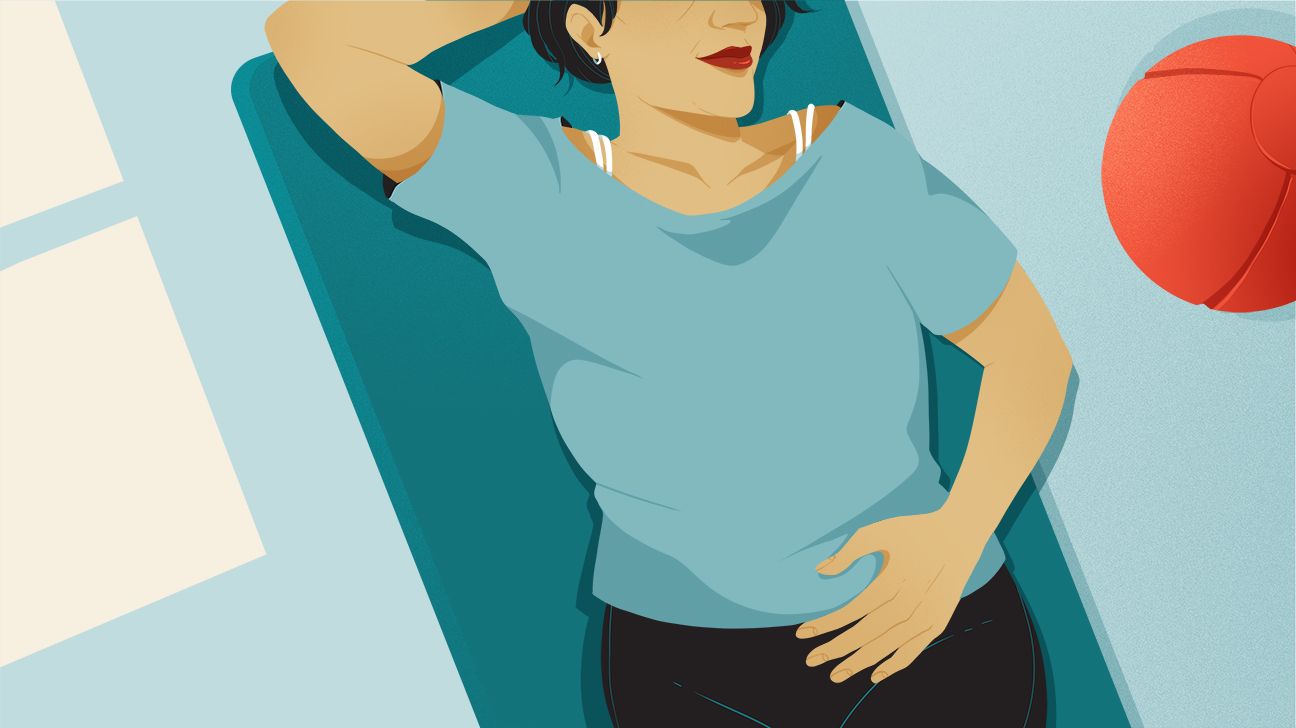6 Exercises for MS Bladder Control
August 07, 2020
Content created for the Bezzy community and sponsored by our partners. Learn More

These moves can help improve bladder control by building strength in your pelvic floor, according to a pelvic health specialist.
If you have bladder control problems, you’re not alone. Many people experience some type of bladder control problem, though it can be hard to talk about.
Leaking urine is one type of bladder control problem, but it’s not the only one. Equally difficult — and in some cases, more significant to overall health — is incomplete bladder emptying. This issue can lead to frequent urination, nighttime awakenings, incontinence, and increased risk of urinary tract infections.
Bladder incontinence and incomplete bladder emptying are common symptoms of multiple sclerosis. There are steps you can take to help improve your bladder function.


How pelvic floor physical therapy can help bladder problems
While it may be difficult to discuss this medical condition, it’s necessary to bring attention to the problem to manage it, and help is available to support you in this process.
One specialized area of care is pelvic floor physical therapy. It can help you improve bladder function by retraining your pelvic floor muscles.
The pelvic floor is a hammock-shaped group of muscles that make up the floor of the pelvis. These muscles have many important functions for the bladder, including:
- supporting the bladder inside the pelvis
- contributing to bladder control by holding the outlet of the bladder (sphincter) closed
- assisting with emptying the bladder by releasing the outlet
- helping control urgency by communicating with the brain and bladder
- telling the bladder to remain calm until you can reach the bathroom
6 exercises for better bladder control
Some exercises pelvic health physical therapists prescribe can help you improve bladder control by building strength in your pelvic floor.
These six exercises will stimulate your pelvic floor muscles to build strength and control. They’re intended to go from easier to more difficult, so you may want to start with the first and slowly add on as you master each exercise.
1. Deep belly breathing
- Start this exercise in a comfortable and supported position — maybe in a reclining chair or lying on your couch. (Be careful not to fall asleep, though, because this can be very relaxing.)
- Place your hands over your lower belly. Take a big breath in, allowing your belly to fill up first, all the way up to your collarbone.
- Blow out gently through your mouth, exhaling completely.
- Once you feel empty, pause and notice that your inner belly muscles and pelvic floor should be gently contracting.
- Hold for about 3 seconds.
- Relax and repeat 3 to 5 times.
You can do this exercise as often as it feels good, aiming for three to five times per day.
This exercise helps wake up the deep core muscles, including the pelvic floor. It can also help calm your nervous system, and this may help with overactive bladder symptoms.
2. Kegels
- Find a comfortable position. You may want to start lying down or in a reclined sitting position.
- Relax, and bring your attention to your pelvic floor.
- Gently pull up and in. To do this, try engaging the muscles that stop urine flow. You may also feel your lower belly (below your belly button) pull in, but the tightening should start with the pelvic floor.
- Let go, and feel your muscles relax or lengthen.
Start with holding for a count of 3 seconds, then release for a count of 4 to 10. How many can you do and still feel the upward pull and the downward release: 10, 15, 20? Start there and do it twice a day. You can work up to about 25 at a time.
Kegels are the cornerstone of all pelvic floor physical therapy exercises. But it can be hard to know if you’re doing them right since you can’t see any movement occurring. If you have a hard time feeling this muscular contraction, then proceed to the next exercise and come back to this exercise after you’ve practiced the others for a few weeks.
3. Ball squeeze
- Start in a sitting position or lying down with your knees bent upward toward the ceiling.
- Holding a small, soft ball between your knees (about 10 to 16 inches apart), squeeze the ball with your legs while pulling your pelvic floor muscles up and in (doing a Kegel).
- Hold for 3 seconds, then relax for 3 seconds.
- Repeat 5 to 10 times, working up to 20 to 25 repetitions at a time.
More like this
- The Benefits of Microworkouts for MS
- How Short Bursts of Exercise Invigorate My Body and Mind
- 10 At-Home Exercises for Multiple Sclerosis
4. Band pull
- Start in a sitting position or lying down with your knees bent upward toward the ceiling.
- Place an exercise band around your thighs.
- Push your knees apart. Hold for 3 seconds, then relax for 3 seconds.
- Repeat 5 to 10 times, working up to 20 to 25 repetitions at a time.
5. Pelvic tilt plus pelvic floor
- Start lying on your back with your knees bent.
- Do a deep belly breath, exhale, and try to feel your deep belly muscles and pelvic floor engage.
- Hold this gentle contraction (without holding your breath) while you flatten your low back and gently tilt your pelvis up.
- Hold for 2 to 3 seconds, relax, and release back to start.
- Repeat 5 to 10 times, working up to 20 to 25 repetitions at a time.
6. Bridge plus pelvic floor
- Start lying on your back with your knees bent.
- Do a deep belly breath, exhale, and try to feel your deep belly muscles and your pelvic floor engage.
- Hold this gentle contraction (without holding your breath) while lifting your hips off the floor.
- Hold for 3 seconds, release, and repeat.
- Repeat 5 to 10 times, working up to 20 to 25 repetitions at a time.
Don’t overdo it
As with any exercise program, you’ll want to give these exercises some time to work. None of these exercises should cause any pain, but you may get sore if you push too fast.
Slow and steady wins the race!
Medically reviewed on July 26, 2024
7 Sources


Like the story? React, bookmark, or share below:
Have thoughts or suggestions about this article? Email us at article-feedback@bezzy.com.
About the author